Wow! Your ever-changing baby is a year old. How time does fly!!!
You have probably noticed your baby using more actions and sounds.
This is the way your baby is trying to communicate with you and show you what he or she wants.
Between 0-6 months old, you used toys to foster awareness of your baby’s world.
Between 6-9 months of age, appropriate toys helped your child interact with his world.
Between 9-12 months of age, your baby began to demonstrate to you via actions and sounds what he wanted to tell you.
In this article, we will discuss milestones the CDC says your child should achieve by age one. We will also talk about appropriate toys for one-year-olds in these five areas of development:
- Gross Motor
- Fine Motor
- Language
- Social
- Cognitive
Note: This post contains affiliate links. If you click on an affiliate link and subsequently make a purchase from the linked website, I may receive a commission. Please read my affiliate disclosure for more information.
Toys for One-Year-Olds
Gross Motor Development 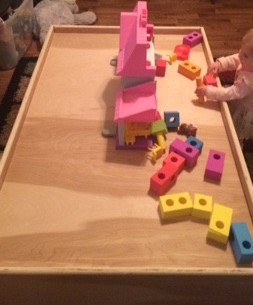
- Independently gets to a sitting position
- Pulls up to stand
- Cruises around furniture
- May take a few steps without holding on
- May stand alone
Provide blocks or stacking toys that require your baby to sit to play with.
Encourage your child to stand by putting toys for one-year-olds on a low table or couch.
My daughter started pulling herself up to stand immediately after my husband made a table just her height to play with her toys on.
Positioning toys in different areas of the table forced her to cruise the perimeter to access them.
Eventually, she was able to walk around the table without holding on. Having your child stand to play helps to develop his leg muscles and balance.
If you don’t have a low table, take the cushions off the couch and put the toys on the bare surface. Your little one will be motivated to pull up and stand to play.
Fine Motor Development 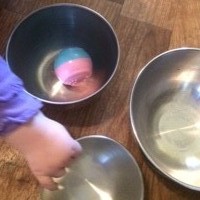
- Puts things in a container and then takes them out
- Bangs two things together
- Lets things go without help
- Pokes with pointer finger
See the homemade baby toys post for an easy toy that you can make to help your baby practice putting things in a container and taking them out. This activity also allows your child to work on letting things go without help.
Another idea is to let your child put objects or balls into stainless steel bowls. Your child will be delighted with these toys for one-year-olds because it makes a lot of noise. Parents beware!
You can use the same items to let your child experiment with banging two objects together. Wooden spoons are fun for young ones to bang on metal. Just remember to supervise this activity!
Language Development 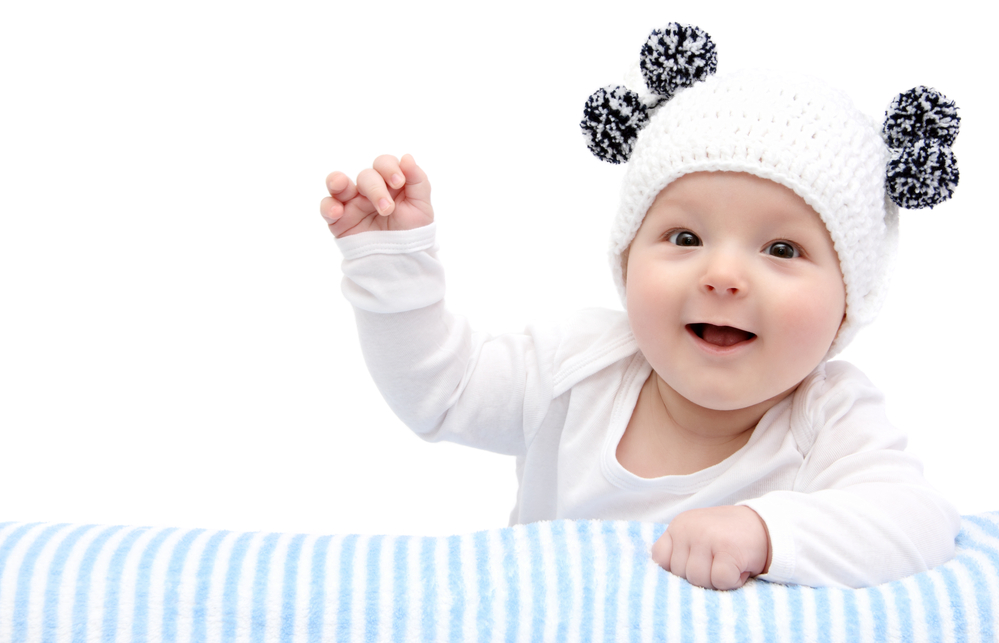
- Responds to simple commands
- Uses simple gestures
- Change tone when making sounds
- Says “mama” and “dada”
- Tries to say some words you say
When playtime is over it is a good time to work on helping your child respond to simple, spoken requests.
Give your child simple commands such as “pick up the toy” or “bring the ball to mommy.”
If your child doesn’t want to comply you may see him communicate this to you by shaking his head no.
This simple gesture is one way your little one is declaring his feelings and independence.
At this age, your child will start making sounds that sound more like speech.
He is experimenting with changes in tone as he gets ready to soon communicate mainly through talking.
The best way to encourage language development is by reading books or doing finger plays with your child.
Social Development 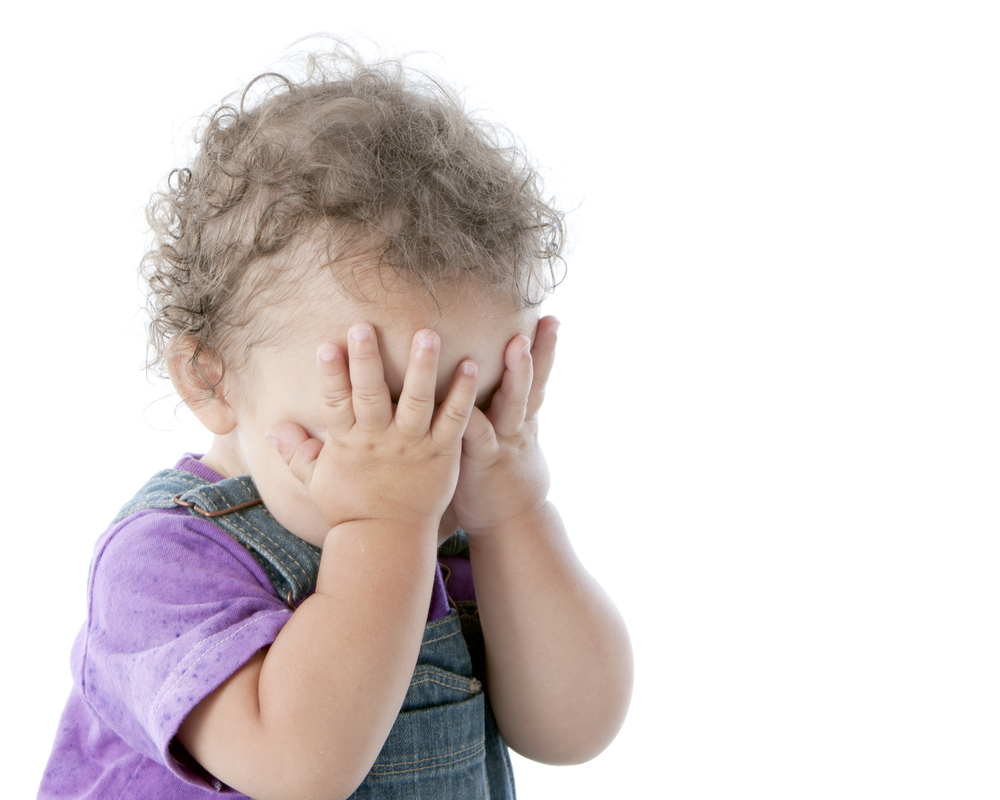
- Demonstrates stranger anxiety
- Cries when parent or caregiver leaves
- Sometimes shows fear
- Has favorite things and people
- Communicates he wants a story by handing you a book
- Gets attention by repeating sounds or actions
- Plays “peek-a-boo” or “pat-a-cake”
As a teacher, I know that the best thing a parent can do when a child cries and doesn’t want you to leave is just leave.
I know it sounds harsh (and as a parent is easier said than done… I know because I had to do this with my three year old son the other day), but I promise you that your child will calm down and do fine once you are out of sight.
Once they no longer see you, they settle in and focus on what is going on around them. If you want to lessen their anxiety (and it is OK with their teacher or provider) leave a special stuffed animal for them to cuddle for a while.
My one year old daughter has a doggy stuffed animal that is definitely her favorite.
She clings to “baby” quite often, but mostly when she is overly tired, anxious or scared. Providing your child with a familiar toy helps him feel safe and not as fearful in uncertain situations.
Books, books, books! Games, games, games! The most powerful way to promote overall development is by reading books and playing games with your little one.
Peek-a-boo and Pat-a-cake are timeless and very effective at helping your child develop socially, emotionally and cognitively.
Cognitive Development 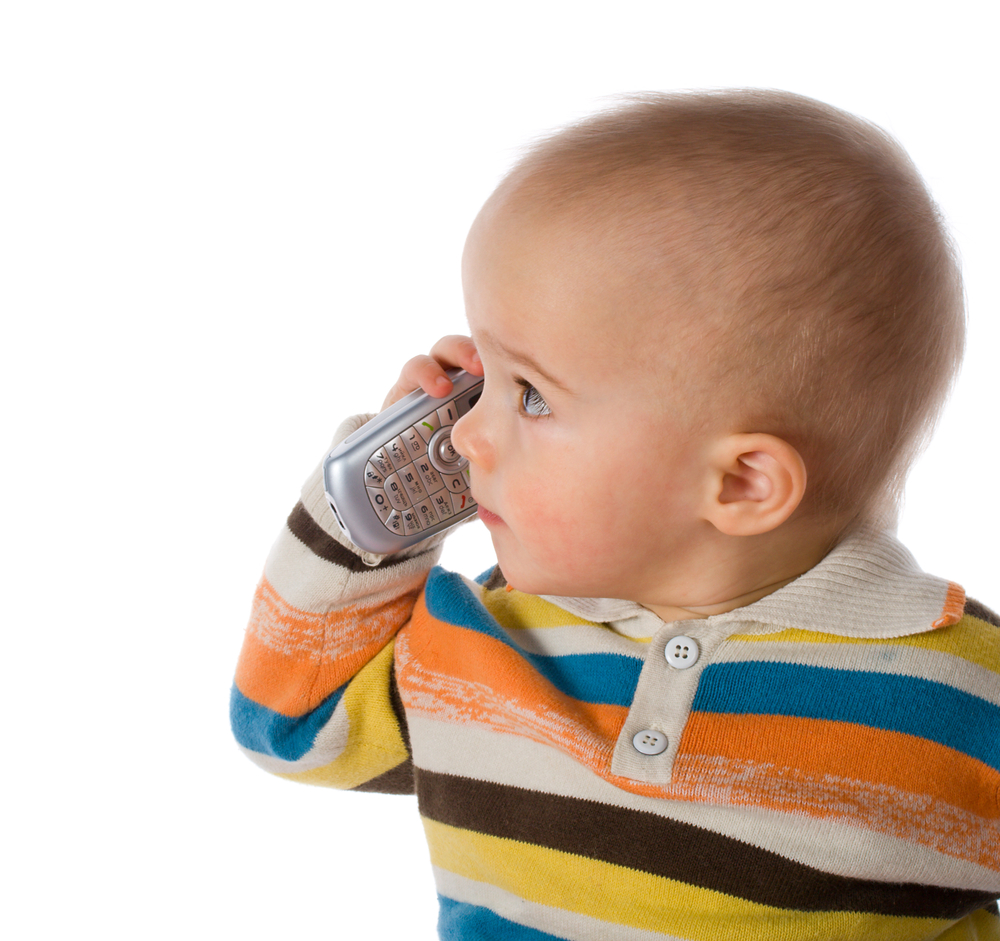
- Finds hidden things easily
- Looks at the right picture or object when it is named
- Explores things in more than one way
- Copies gestures
- Follows simple directions
- Starts to use things correctly
- Offers arm or leg to help with dressing
Play games where your child has to find hidden objects. Say “you found the red ball” or “can you find the block?” to teach your child the correct names of objects.
While reading a book, say “where is the piggie?” or “can you show me the dog?” See if your child will look at or point to the correct thing you asked them to locate.
Around this age, you will see your child begin to use things correctly.
For example, he may put a phone up to his ear or try to comb his hair with a brush.
This is proof that your child is watching your every move and is learning how to copy and imitate others.
Communicate 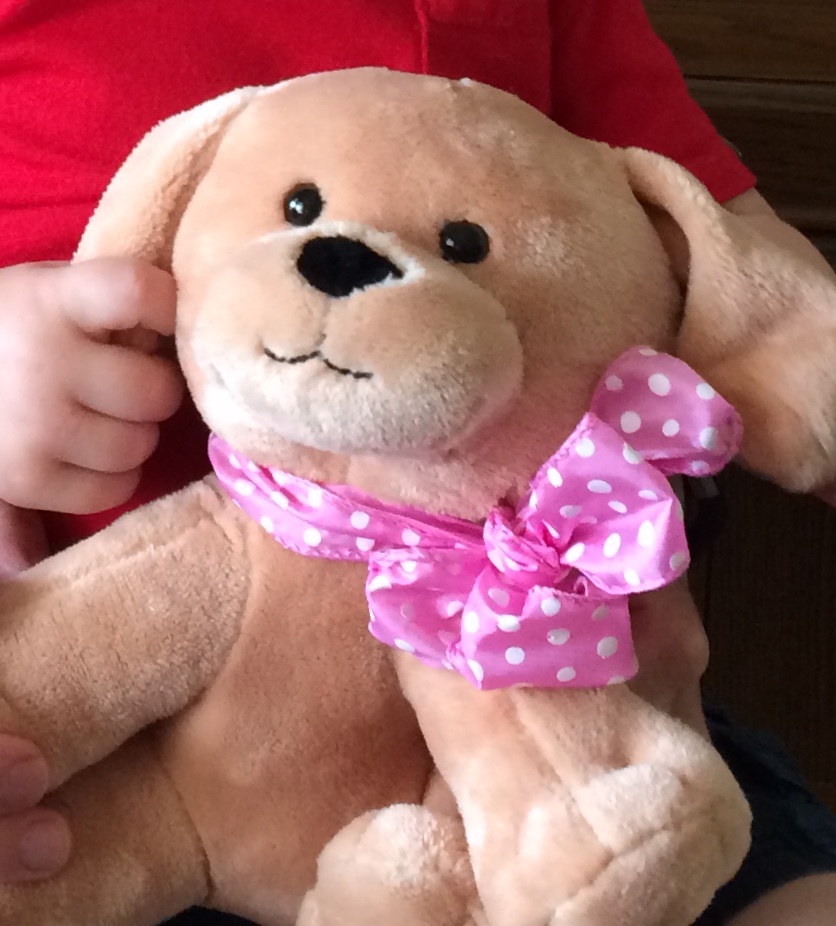
Just now, I walked into the living room after getting my daughter up from her nap. She immediately started pointing at her room saying “Baby.”
She was telling me that she had forgotten to bring her favorite puppy dog toy with her.
I turned right around and retrieved the lonely pooch because she would have kept communicating her urgent request until I fulfilled it.
Just like my daughter, your one-year-old is all about communicating how he feels and what he needs or wants.
This article touched on just a few of the many toys for one-year-olds that help them learn to communicate and achieve developmental milestones.
Use toys to encourage communication, but most of all take time to communicate and interact with him yourself!









This is such a great post and definitely helps me in trying to communicate with my toddler. I think this great information for moms to have. It’s not always easy to know what your baby is trying to say or communicate with you but you do a good job of pointing those things out.
Thanks for sharing your experience and expertise.
Thank you Jen! Glad to help!
Awwww this was the cutest post I have read today. I have a little one that just turn one years old March 7 th and he is learning so much. He started walking on his birthday and has not slowed down since. He is developing beautifully and showing signs of all five development stages. This is a very informative post and it explains very well about each stage and what is expected from your child at that stage. Great job and thank you for the info.
You are welcome, Doris! Glad I could help! Happy 1st Birthday to your son. What a fun age!
Sharon
Wow this is pretty creative and thank you for the insight on how to teach babies how to communicate. This a very good article. Thanks again.
Thank you, Andre!